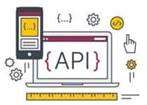Integration testing requires setting up a realistic testing environment that resembles the production environment. Another challenge of integration testing is managing the sheer volume of test cases that must be run. That applies to both when writing the integration testing initially and knowing how to troubleshoot them. The complexity of test cases increases as the complexity of the components that need to be tested increases. Engineers start testing from the lower units of the application and gradually move up. Designing test data can help make sure all relevant scenarios have been tested and that results can be accurately compared against expected outcomes.

In general, two or more modules are added and tested to ensure that their functions work. Testing continues until all modules are successfully tested.There is a strong relationship between the dependent modules in this type of testing. Consider two or more modules and test whether the data flow between them is working properly. Unit testing and integration testing are both a part of the software testing life cycle.
The Benefits of System Integration for Businesses
But then the team B comes and pushes their own changes to the shared repository, the team B can accidentally break functionality that team A has implemented. A combination based on bottom-up and top-down strategy leveraged for a comprehensive system integration testing approach. System integration testing requires the verification of how different systems interact with each other. This can be difficult to achieve if there are multiple systems involved, or if they use different technologies or protocols. Once goals have been established, define specific test cases that will be used to validate the system’s functionality. This should include both positive and negative tests to ensure all possible scenarios are covered.
- In this method, the data export and import occur between the system modules, and then the performance of each data field within the individual layer is monitored.
- System integration testing (SIT) verifies that the different systems or components of a system work together as intended.
- With third-party system integration, the focus is on expanding the functionality of an existing tool or software.
- As your software project gets bigger and bigger, it becomes harder to test all the different scenarios in the application manually.
As the flow suggests, the top-level modules cannot be integrated into the system until and unless bottom-level module testing is done and coupled. So the driver here helps in coupling the bottom-level and top-level modules and works as a medium or, in a technical term, as a call function. Integration testing is the second level of the software testing process; it is situated before system testing and after unit testing. See Figure 1 below to see the four levels of the software testing process and how integration testing is situated among them. Integration testing is a phase in software testing where software modules are combined into a group and tested together. The purpose of integration testing is to assess the compliance of a system by checking the software modules’ compatibility and interoperability.
What is System Integration Testing vs. UAT?
We integrate the top module with the stubs of the lower-level modules, one by one, to test their functionalities. After completing each test, the real module replaces the corresponding stub. This testing approach continues until the entire system has been thoroughly tested. System Integration Testing, or SIT, is the process of comprehensive testing performed on the application software and the complete system, usually made of more than one smaller unit of software and hardware. The primary goal of executing this type of testing is to ensure that the functional characteristics of the software and hardware systems are in sync with one another.

In this approach, we integrate the modules of the system only after completing all the individual modules. After integrating the components, the entire system undergoes testing to ensure its functionality. System testing is defined as the process of running tests on the entire software as a whole from a user point of view. The goal of this test is to check if the product is meeting the user requirements and needs while finding bugs and defects that must be corrected in order to do so. System testing is also referred to as an end-to-end test because of the full cover the test is providing and the advanced development stage the test is performed in.
CKAD Certified Kubernetes Application Developer Journey: Tips and Exam Preparation Guide [July…
Automating the integration test cases is recommended when they are too complex to be executed manually or repeatedly. Testsigma is a tool that can help automate system integration tests easily as it supports the automation of web, mobile, desktop, and API tests from one place. Also, it’s a no-code test automation tool that lets you start your test automation within minutes. Thus, it is well-suited for agile methodologies for software development. Furthermore, the use of these two valuable tests is crucial in every software development in order to create a product that answers the user’s needs and meets the business requirements. Also, using a document like a test plan or PractiTest’s test management tool could substantially help trace and manage all the important aspects of testing.
Sandwich or Hybrid tests are suitable for large scale projects that have many sub projects linked with. These tests are complex to test, are high in cost and are system integration testing definition not suitable for small projects. Stub is used to develop or test lower level components in isolation; it can also be used as replacement for called component.

Integration testing aims to discover any defects that may arise when the modules are integrated and must interact with each other. By conducting integration testing, teams aim to ensure that the system has no connectivity or communication issues on the level of software modules. If undetected, integration failures are difficult and expensive to fix after the product’s release as developers have to make in-depth system-level changes to remove these defects. At Ntiva, our teams specialize in software, services, solution, and data integration at scale. That’s why our systems integration focus is to advance alongside your operations.

SIT’s main purpose is to analyze the interfaces between modules in a software stack to make sure one module can talk to and work with another module. Testing is performed in both directions and is grouped in the middle layer. However, there is also a limitation where you can thoroughly test the individual subsystems before integration.
